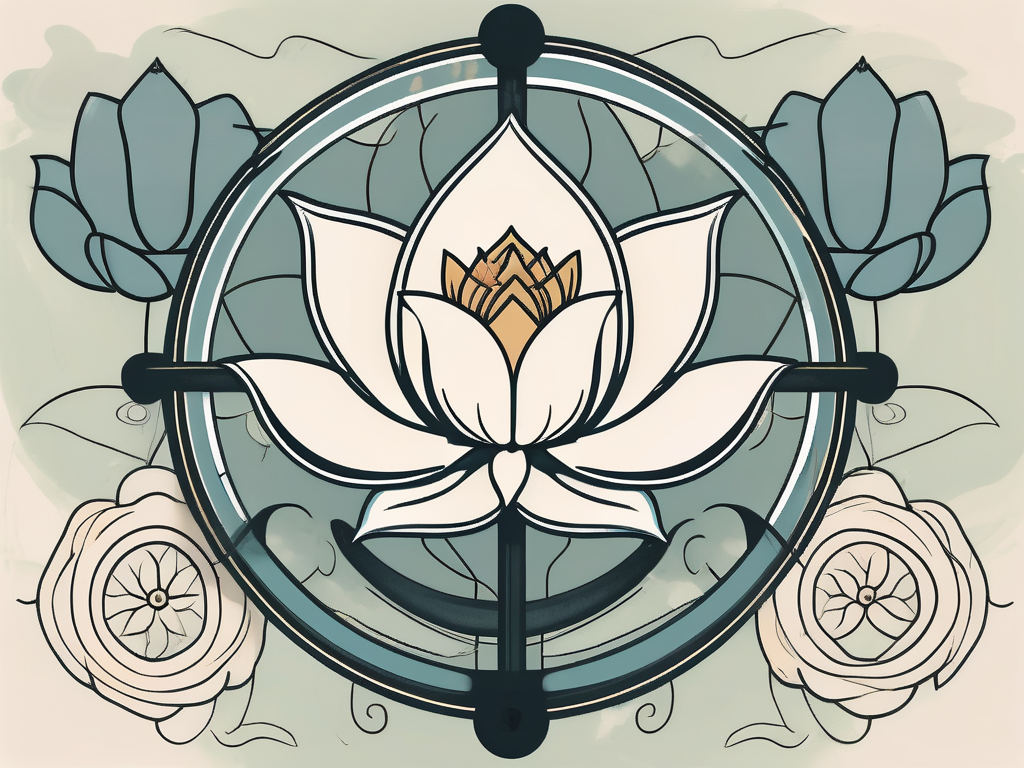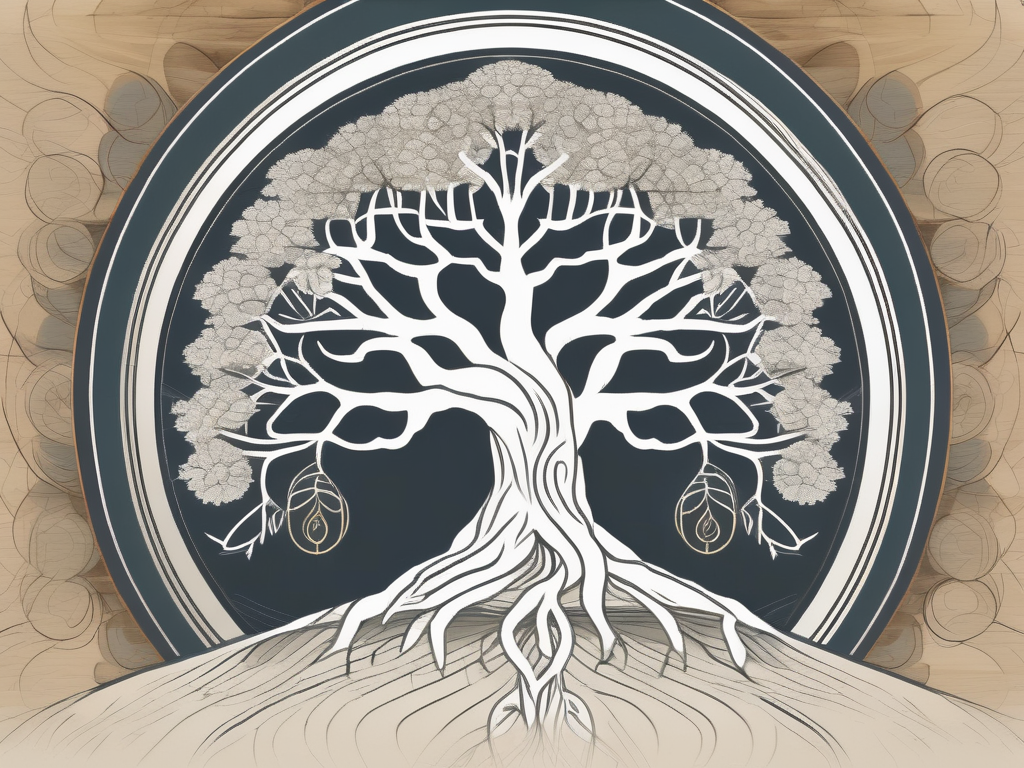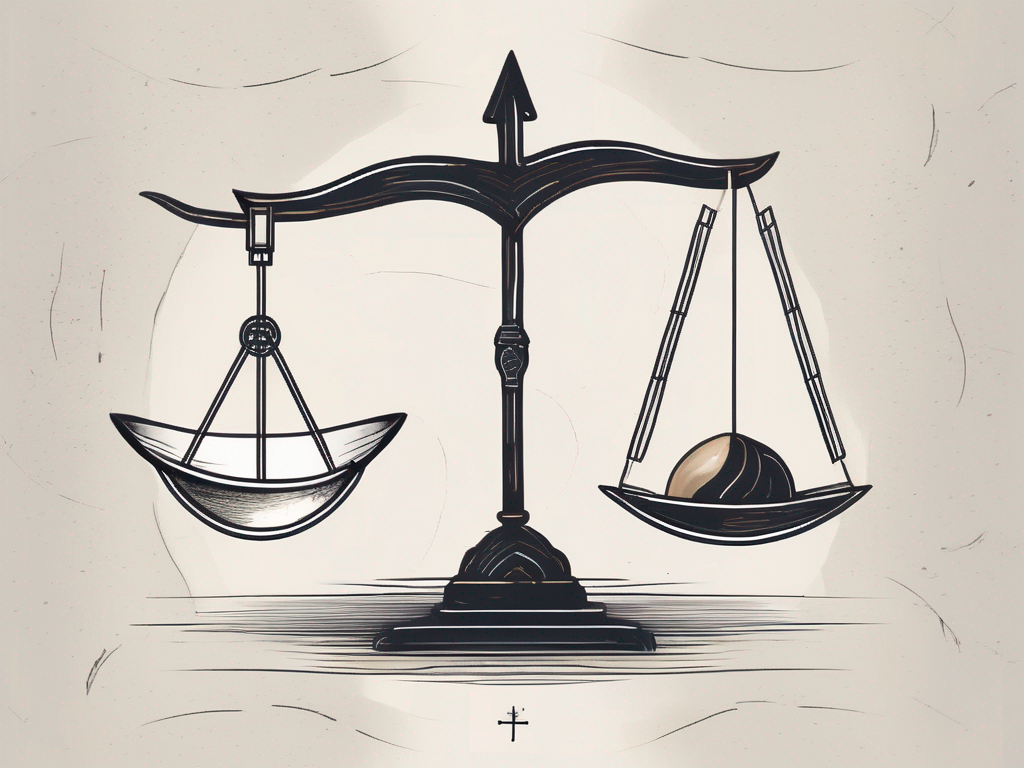Hinduism is one of the oldest religions in the world, with a rich tapestry of beliefs, rituals, and traditions. Exploring the depths of this ancient faith can be an enlightening and captivating journey, allowing us to understand the essence of Hinduism. In this comprehensive guide, we will delve deep into the core principles of Hinduism, the pantheon of gods and goddesses, the practice of rituals and traditions, and the profound concepts of dharma and karma.
Understanding the Basics of Hinduism
Before immersing ourselves in the complexities of Hinduism, it is necessary to grasp the basics. The origins and history of Hinduism lay a strong foundation for understanding its multifaceted nature.
Hinduism, one of the oldest religions in the world, emerged from the ancient civilizations along the Indus River and evolved over thousands of years. Its history is interwoven with a rich tapestry of diverse cultures, traditions, and philosophical thoughts.
Unlike other religions, Hinduism does not have a single founder or a specific time of origin. It grew organically, absorbing various religious, social, and cultural influences over time, resulting in a vibrant and diverse spiritual landscape.
As we delve deeper into the origins and history of Hinduism, we discover fascinating tales of ancient sages and seers who contemplated the mysteries of life and sought to understand the nature of existence. These wise individuals, known as Rishis, delved into deep meditation and introspection, unraveling profound truths about the universe and human consciousness.
The Origins and History of Hinduism
Hinduism’s journey through time is a captivating narrative that spans millennia. From its humble beginnings in the ancient Indus Valley civilization, Hinduism has grown and flourished, adapting to the changing tides of history.
The early roots of Hinduism can be traced back to the Indus Valley civilization, which thrived around 2500 BCE. Excavations at sites like Mohenjo-daro and Harappa have revealed artifacts and symbols that bear striking resemblances to Hindu practices and deities.
Over time, as the Indus Valley civilization declined, a new wave of Aryan migrants entered the Indian subcontinent. These migrants brought with them their own religious beliefs and practices, which merged with the indigenous traditions, giving rise to what we now know as Hinduism.
Throughout its history, Hinduism has witnessed the rise and fall of empires, the spread of Buddhism and Jainism, and the influence of various philosophical schools of thought. It has absorbed and assimilated these diverse influences, enriching its own tapestry of beliefs and practices.
Core Beliefs and Principles of Hinduism
At the heart of Hinduism lie a set of fundamental beliefs and principles that guide the lives of its adherents. Central to Hindu philosophy is the concept of Brahman, the universal divine essence that permeates all existence.
Hinduism recognizes the importance of spiritual growth through self-realization and attaining a state of union with Brahman. This journey is paved through various paths, or yogas, such as Bhakti Yoga (the path of devotion), Karma Yoga (the path of selfless action), and Jnana Yoga (the path of knowledge).
Within the vast landscape of Hinduism, we encounter a multitude of gods and goddesses, each representing different aspects of the divine. From Brahma, the creator, to Vishnu, the preserver, and Shiva, the destroyer, these deities embody the various forces and energies that shape the universe.
The sacred texts, known as the Vedas, Upanishads, and the Bhagavad Gita, provide guidance and inspiration for Hindus on their spiritual journey. These scriptures explore profound philosophical concepts, ethical principles, and moral values.
As we explore the core beliefs and principles of Hinduism, we uncover the intricate web of rituals, ceremonies, and festivals that form an integral part of the Hindu way of life. From Diwali, the festival of lights, to Holi, the festival of colors, these celebrations bring communities together and foster a sense of unity and devotion.
The Pantheon of Hindu Gods and Goddesses
One of the remarkable aspects of Hinduism is its vast pantheon of gods and goddesses, each representing different aspects of the divine.
Hinduism, one of the oldest religions in the world, encompasses a rich and diverse collection of deities. These gods and goddesses are revered and worshipped by millions of Hindus around the globe. They are believed to possess unique qualities and powers, and their stories and legends form an integral part of Hindu mythology.
Let us delve deeper into the intricacies of the Hindu pantheon and explore some of its most prominent figures.
The Concept of Brahman
Central to Hindu belief is the concept of Brahman, often described as the ultimate reality or divine essence that encompasses everything in the universe. Brahman is the source from which everything arises and merges back into, and it is both immanent and transcendent.
Brahman is considered formless and beyond human comprehension. It is believed to be the underlying force that sustains the cosmos and permeates every living being. The realization of Brahman is the ultimate goal of spiritual seekers in Hinduism, as it leads to liberation from the cycle of birth and death.
In Hindu philosophy, Brahman is often compared to a vast ocean, with individual beings being like waves that emerge and merge back into the ocean.
The Trimurti: Brahma, Vishnu, and Shiva
The Trimurti, consisting of Brahma, Vishnu, and Shiva, represents the three primary aspects of the divine. Brahma is the creator, Vishnu the sustainer, and Shiva the destroyer and transformer. Together, they embody the eternal cycle of creation, preservation, and dissolution.
Brahma, the first member of the Trimurti, is often depicted with four faces, representing the four Vedas, the sacred texts of Hinduism. He is responsible for the creation of the universe and all living beings.
Vishnu, the second member of the Trimurti, is considered the preserver and protector of the universe. He is believed to incarnate on Earth whenever the world is threatened by evil forces. His avatars, such as Rama and Krishna, are revered and worshipped by millions.
Shiva, the third member of the Trimurti, is the destroyer and transformer. He is often depicted as a yogi meditating in the Himalayas, surrounded by serpents and wearing a crescent moon on his head. Shiva represents the power of destruction, which is necessary for new creation to take place.
The Goddesses: Saraswati, Lakshmi, and Parvati
The Hindu pantheon also includes a panoply of goddesses, each symbolizing different qualities and virtues. Saraswati is the goddess of knowledge and wisdom, Lakshmi embodies wealth and prosperity, and Parvati represents divine femininity and power.
Saraswati, often depicted playing the veena, a musical instrument, is worshipped by students and scholars seeking knowledge and creativity. She is believed to bless her devotees with intellect, eloquence, and artistic abilities.
Lakshmi, the goddess of wealth and prosperity, is revered by Hindus for her ability to bestow material and spiritual abundance. Devotees often pray to her for financial well-being, success, and good fortune.
Parvati, also known as Devi or Shakti, is the consort of Lord Shiva. She embodies the divine feminine energy and is worshipped as the mother goddess. Parvati is revered for her strength, compassion, and nurturing nature.
These goddesses, along with many others in the Hindu pantheon, play a significant role in the lives of devotees, who seek their blessings and guidance in various aspects of life.
As we explore the vast and diverse pantheon of Hindu gods and goddesses, we begin to comprehend the depth and richness of Hindu mythology. Each deity represents a unique facet of the divine, offering devotees a multitude of paths to connect with the ultimate reality.
The Practice of Hindu Rituals and Traditions
Rituals and traditions occupy a significant place in Hinduism, acting as a tangible way for devotees to express their faith and connect with the divine.
Hinduism, one of the oldest religions in the world, is a rich tapestry of beliefs and practices. Its rituals and traditions play a vital role in the lives of its followers, providing a framework for spiritual growth and connection with the divine.
At the heart of Hindu worship is the practice of puja. Puja, which means “worship” in Sanskrit, is a cornerstone of Hindu religious practice. It involves offering prayers, flowers, incense, and food to deities, either in temples or in the sacred space of one’s home. Puja allows devotees to establish a personal connection with the divine and seek blessings.
The Importance of Puja in Hindu Worship
Puja is not merely a ritualistic act, but a deeply meaningful and personal experience. It is a way for devotees to express their love, gratitude, and devotion to the deities. Through the act of puja, Hindus believe they can communicate with the divine and receive their blessings.
The process of puja is intricate and precise, with each step holding symbolic significance. From the lighting of the lamp to the chanting of mantras, every action is performed with utmost reverence and devotion. The fragrance of incense, the sound of bells, and the sight of colorful flowers create a sensory experience that transports the devotee to a realm of spiritual bliss.
The Role of Yoga and Meditation
Yoga and meditation hold immense significance in Hinduism, serving as tools for spiritual growth and self-realization. Yoga, an ancient practice of physical postures and breath control, aims to purify the body and calm the mind. It is not just a physical exercise, but a pathway to spiritual enlightenment.
Meditation, on the other hand, involves focusing the mind to attain a state of tranquility and insight. It is a practice of stillness, allowing the practitioner to go beyond the limitations of the physical world and connect with their inner self. Through meditation, Hindus seek to quiet the mind, find inner peace, and experience a deeper connection with the divine.
Festivals and Celebrations in Hinduism
Hinduism is renowned for its vibrant festivals and celebrations, which have cultural, historical, and religious significance. These festivals are an integral part of Hindu life, bringing communities together in celebration and devotion.
One of the most widely celebrated festivals in Hinduism is Diwali, also known as the festival of lights. Diwali signifies the victory of light over darkness and good over evil. During this festival, homes are adorned with oil lamps, colorful decorations, and intricate rangoli designs. Fireworks light up the night sky, and families come together to exchange gifts and sweets.
Holi, the festival of colors, is another joyous occasion celebrated with great enthusiasm. It marks the arrival of spring and the triumph of good over evil. During Holi, people gather in open spaces, smearing each other with vibrant colored powders and spraying water. The atmosphere is filled with laughter, music, and a sense of unity.
These festivals not only provide an opportunity for Hindus to express their devotion, but also serve as a means of cultural preservation. They are a time for families to come together, for communities to bond, and for traditions to be passed down from one generation to the next.
The Concept of Dharma and Karma in Hinduism
Hinduism places a strong emphasis on dharma and karma, two interconnected concepts that shape the moral and ethical principles of life.
Hinduism, one of the oldest religions in the world, encompasses a vast array of beliefs and practices. At its core, Hinduism seeks to guide individuals towards leading a virtuous and meaningful life. Central to this pursuit are the concepts of dharma and karma.
Understanding Dharma: The Moral Duty
Dharma, derived from the Sanskrit word “dhri,” meaning “to hold,” refers to the righteous path and moral duty that every individual has in life. It encompasses personal, familial, societal, and cosmic responsibilities, guiding individuals to live a virtuous and meaningful life.
Within the framework of dharma, individuals are encouraged to fulfill their duties and obligations in various spheres of life. For instance, a person’s personal dharma may involve practicing self-discipline, honesty, and compassion towards oneself and others. Familial dharma may entail fulfilling responsibilities towards one’s parents, spouse, and children. Societal dharma may involve contributing positively to the community and upholding social justice. Cosmic dharma, on the other hand, refers to the broader responsibility of maintaining harmony and balance in the universe.
By adhering to their dharma, individuals strive to lead a life that is in alignment with their true nature and purpose. It is through the fulfillment of dharma that one can experience a sense of fulfillment and inner peace.
Karma: The Law of Cause and Effect
Karma, another fundamental concept in Hinduism, is the law of cause and effect. It stipulates that every action has consequences, both in this life and in future lives. According to this concept, individuals accumulate both positive and negative karma based on their thoughts, words, and deeds.
The cycle of birth, death, and rebirth, known as samsara, is influenced by one’s accumulated karma. Positive actions lead to positive consequences and contribute to a favorable future, while negative actions lead to negative consequences and perpetuate the cycle of suffering.
Hinduism teaches that through selfless actions and detachment from desires, individuals can attain liberation from the cycle of samsara and achieve moksha, the ultimate goal of spiritual liberation. By purifying one’s karma through righteous actions, individuals can transcend the limitations of the material world and unite with the divine.
It is important to note that karma is not solely focused on the individual level but also extends to collective karma. This means that the actions of a community or society as a whole can have far-reaching consequences, shaping the destiny of future generations.
As we conclude this comprehensive guide to Hinduism, we have touched the surface of its profound teachings, intricate ritual practices, and divine mythology. The essence of Hinduism lies in its diverse and all-encompassing nature, offering spiritual seekers a rich tapestry of beliefs, traditions, and practices to explore on their own personal journeys.












